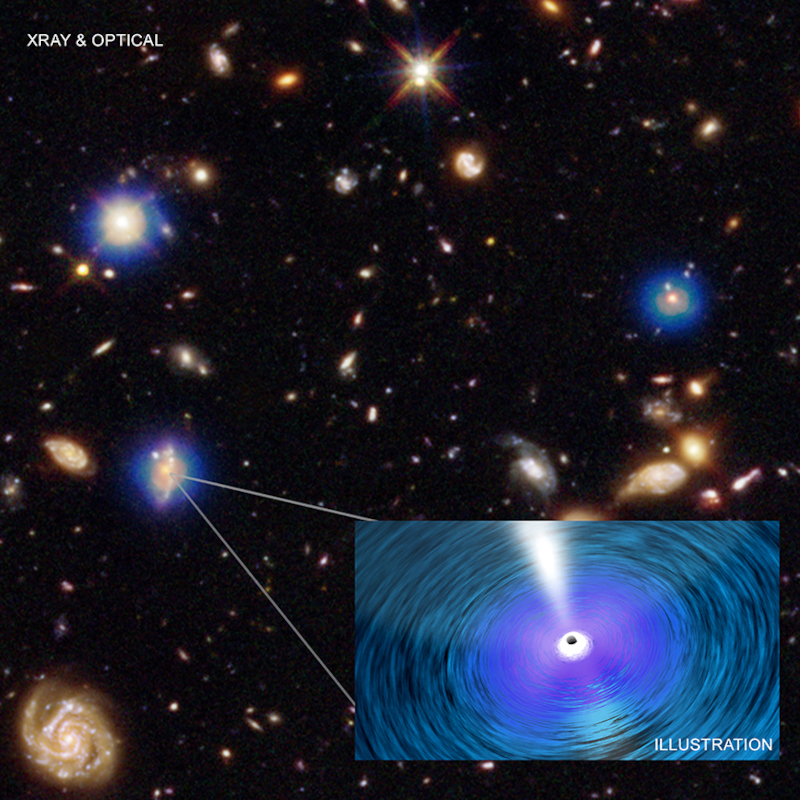
 Credit: X-ray: NASA/CXC/Penn. State/G. Yang et al & NASA/CXC/ICE/M. Mezcua et al.; Optical: NASA/STScI; Illustration: NASA/CXC/A. Jubett
Credit: X-ray: NASA/CXC/Penn. State/G. Yang et al & NASA/CXC/ICE/M. Mezcua et al.; Optical: NASA/STScI; Illustration: NASA/CXC/A. Jubett
Growing Black Holes in a Young Universe
Even seemingly empty space holds immense secrets if you look closely. We know that nearly every galaxy has a supermassive black hole, containing a mass equivalent to millions or billions of times the mass of the sun, at the galaxy's center. But where these monsters come from, and how they grow to such enormous size, are still open questions. Answering these questions requires observations of faint galaxies at enormous distances, those formed early on in the history of the Universe. The most distant galaxies can be detected by staring through "holes" in the Milky Way, along lines of sight with little obscuring material from our Galaxy. The image above is a detail of a region of space known as the Chandra Deep Field South, a window through which the Chandra X-ray telescope and the Hubble Space Telescope peered to detect some of the most distant, faintest galaxies ever seen. The Hubble observation, shown in red, green and blue above, identifies the locations, distances, and sometimes the shapes of these far-flung galaxies, while the high spatial X-ray image from Chandra (in blue) pinpoints the presence of supermassive black holes in these galaxies by the X-rays they emit as they accrete enormous amounts of gas and dust from their host galaxies (as illustrated in the inset). By comparing the X-ray and optical images scientists were able to study how these supermassive black holes grow via accretion as the Universe ages, and to compare that to the rate at which normal stars form. This research shows that the rate at which black holes grow is higher in the early Universe, and that, at a given time, the black hole growth rate is higher in more massive galaxies.
Published: August 12, 2024
<
HEA Dictionary ● Archive
● Search HEAPOW
● Other Languages
● HEAPOW on Facebook
● Download all Images
● Education ● HEAD
>

Each week the HEASARC
brings you new, exciting and beautiful images from X-ray and Gamma ray
astronomy. Check back each week and be sure to check out the HEAPOW archive!
Page Author: Dr. Michael F. Corcoran
Last modified Monday, 19-Aug-2024 10:54:19 EDT


